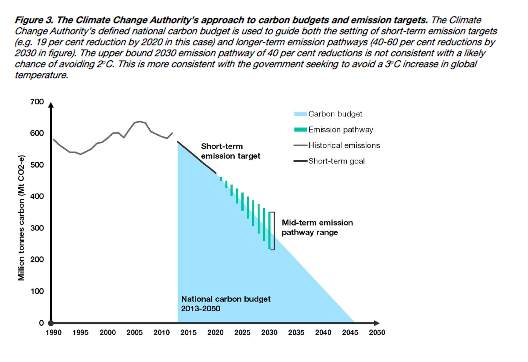Scientific, investment and international realities are turning the political dial to post-2020 and ultimate decarbonisation targets.
A new report from The Climate Institute that examines the evolving international climate framework concludes that Australia will need a net 2025 emissions reduction target of 40 per cent below 2000 levels, or face the complete decarbonisation of the economy from 2040 if there are further delays.
By just focusing on 2020 emission and renewable energy goals, the recent political debate has ignored growing scientific, investment, and international realities. This short-term focus is simply a high risk approach to the significant challenges of decarbonising our economy and helping avoid dangerous impacts for Australia.
Australian politics is fixated on 2020 but the world is now increasingly looking beyond 2020.
In Warsaw last year, Australia and other countries agreed to advance their initial post-2020 targets in early 2015. Europe recently agreed its initial post-2020 offer of at least 40 per cent cuts in emissions by 2030. The US and China have said they will advance their targets soon. These targets will be reviewed and scrutinised internationally before they are finally attached to the final post-2020 framework to be agreed in Paris at the end of 2015.
It is time for the Australian government to put forth an independent, transparent domestic process to define our post-2020 targets. This process should be announced in the lead up to the Lima climate talks.
The question for the government is whether it seriously accepts the internationally agreed goal of avoiding warming of 2ºC above pre-industrial levels and that these warming levels threaten Australia’s national interest, prosperity and security.
Australia – along with over 190 countries – has agreed to work collectively to avoid 2ºC of warming. Australia is already feeling costly climate impacts, but warming above 2ºC would bring critical health and economic risks.
Discussion around our long-term targets is an opportunity to look beyond short-term politics and examine the ultimate objectives of our national climate change policy. At its heart, this conversation needs to define what is in Australia’s national interest.
Based on a fair contribution to global efforts to avoid 2ºC, The Climate Institute analysis finds Australia’s initial post-2020 target offer should include:
+ A short-term commitment to reduce net emissions by 40 per cent on 2000 levels by 2025
+ A medium-term emission pathway of 65-75 per cent reductions on 2000 levels by 2035
+ A long-term goal to decarbonise the economy by between 2040 and 2050
For any policy to remain stable and effective it needs to be relevant not just for the next five years, but for the next 50 years. Failure to deliver a proper plan risks institutionalising investment uncertainty, and a much more rapid – and therefore more disruptive – decarbonisation at a later date. It also completely avoids the physical, investment and international realities of climate change and evolving action to address it.
Erwin Jackson is deputy CEO of The Climate Institute.











